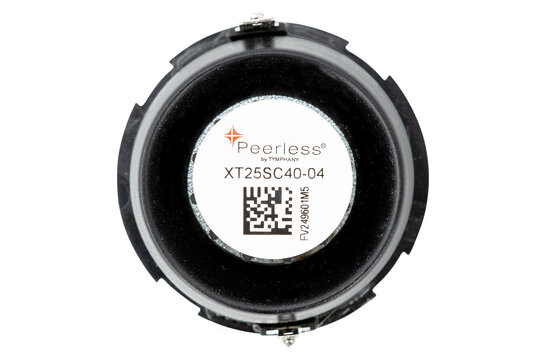





- We ship to United States of America
- Ordered now, shipped tomorrow
- At least two years warranty
- 45-day cooling-off period to return
-
Customer rating:


















The Tymphany XT25BG60-04 features a patented dual concentric diaphragm and a unique waveguide center plug that provide an excellent on- and off-axis response.
Peerless by Tymphany XT25BG60-04 1" Shielded Dual Ring Radiator Tweeter
This member of the XT tweeter family utilizes two patented Tymphany technologies to deliver exceptional sound quality: the ring radiator, and the central waveguide. The Peerless XT25SC40-04 features a 4 ohm 25 mm voice coil, mounted in a neodymium motor to keep the efficiency high on this extremely compact tweeter. The tweeter also features a rear chamber to enable extended low frequency response with remarkably low distortion. This tweeter as ready-made to be adapted to any compact faceplate, rear mount, or custom installation. In addition, the combination of small size, accurate frequency response, and 4-ohm impedance makes this tweeter also suitable for car audio systems.

Compared to standard dome tweeters, the ring radiator design offers superior off-axis performance, extended high-frequency response, and lower distortion at high output levels.
Peerless manufacturing code: T04-1E0010018
Show more
Show more